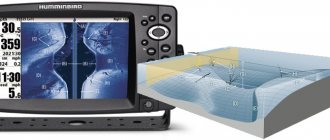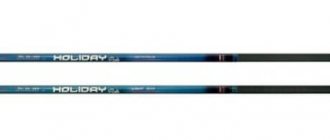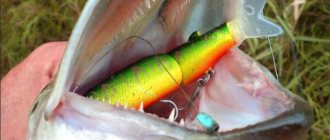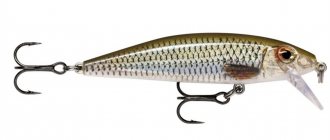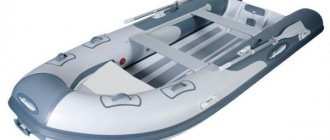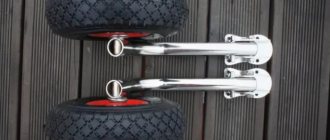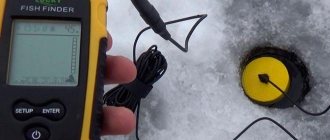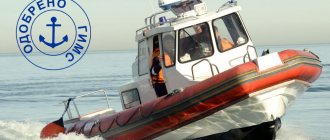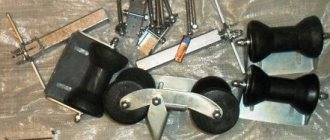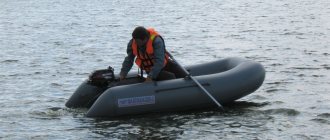The feasibility of installing a motor
It is unlikely that anyone will dispute the opinion that an outboard motor is necessary for a rubber boat. You must admit that moving with oars is not an easy task, especially if you are moving against the current and also have several passengers and equipment on board. If you use a motor for a rubber boat, you will have much more physical strength left for fishing.
An outboard boat engine will add a pleasant element of drive to boat trips and allow you to quickly get to remote areas of the reservoir.
Mercury F 10MH
To the best boat motors up to 10 hp. we took the 4-stroke Mercury F 10 MH. This is a new generation engine, it is easy to operate and is fuel efficient. It weighs a little, is compact, and has a progressive design – these are the features of the presented PLM. This engine quickly develops speed, is characterized by low noise and low vibration. The engine is equipped with electronic fuel injection. It has a multifunctional proprietary tiller that can be adapted to be controlled by either hand.
Mercury F 10 MH is a motor with a reliable, proven design. It comes fully equipped. The presented model can work for a long time without complaints. If a technical problem occurs, the engine can always be repaired. PLM is easy to maintain. The same oil can be drained without spilling.
General recommendations: what to look for when choosing and purchasing
When choosing an outboard motor, you should take into account the overall dimensions and capacity of the boat, as well as operating features. There is no need for a powerful and high-speed engine if the reservoir is small and the fishing spot is located close to the coastline. Fans of high-speed walks will benefit from powerful and high-revving engines. When planning to purchase a motor, you should pay attention to a number of important characteristics. Let's consider them further.
Deadwood dimensions
When choosing a motor, you should focus on the distance from the motor to the propeller, which is called the deadwood length. This parameter is determined by the height of the transom mounting of the rubber boat. For each type of boat, the instructions indicate the recommended deadwood length. Installing an engine with a short deadwood or, as they say, a short leg will not allow the propeller to submerge in the water. This will cause a loss of power. Using a motor with an increased knee length will make it difficult to control the boat due to increased water resistance.
Dimensions should be considered when choosing an outboard motor
Unit type
Outboard motors of rubber boats are classified according to a number of criteria:
- features of the power unit. Outboard electric motors powered by a battery are used, as well as two-stroke or four-stroke gasoline engines;
- propulsion features. The movement of a rubber boat can be carried out due to the rotation of the propeller or the pressure of the jet supplied by the water jet unit.
Each type of engine has its own characteristics, which we will discuss in subsequent sections.
Control system
Outboard motors for PVC boats can have different control schemes:
- tiller It allows you to gain speed by rotating the tiller handle and turning the boat by changing the angular position of the engine handle. The advantages of the system are reliability and simplicity;
- remote. The remote control option is convenient for long boats that have a rudder at the front of the cockpit. This design is more complex and expensive compared to a tiller control system.
For rubber boats, the first option is mainly used.
Planing mode and boat speed
If you want to achieve a certain boat speed and select an engine for this, you need to have information about the exact dimensions of the vessel, the number of crew members and the weight of the cargo being transported. Manufacturers of boats usually regulate the amount of engine power and the possible speed that a boat with a motor of a certain power can develop. If the boat manufacturer allows it to go into planing mode, a more powerful engine will be required. Lack of power will significantly reduce speed.
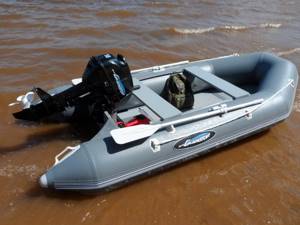
Outboard motors for PVC boats can have different control schemes
Load capacity
The total weight of passengers and the weight of transported equipment are determined by the displacement of the boat, the lower part of which, when loaded, is significantly submerged in the water. Boats with increased payload and displacement will require a powerful outboard engine that can provide increased speed. A low-power motor will not be able to accelerate a loaded boat and bring it to the glider.
Price
The amount of money that the owner of a rubber boat is willing to spend on the purchase of a drive motor is determined by his financial capabilities. However, even if you lack financial resources, you should not buy a cheap motor whose characteristics do not correspond to the parameters of the boat. You should not save on purchasing an outboard engine by giving preference to products from dubious manufacturers. It is worth buying a more expensive drive unit manufactured by a well-known company.
The best gasoline engines for boats costing up to 20,000 rubles
1
Outboard motor HDX T 2.6 CBMS
RUR 19,999
Rating 4.6
17 reviews
The HDX T 2.6 CBMS outboard motor is considered one of the best budget options. Capable of reaching speeds of 10-15 km/h depending on the load on the boat. The engine is lightweight and easy to operate, the fuel tank capacity is 1.2 liters. A two-stroke single-cylinder engine is installed, which has a maximum power of 2.6 hp. The engine is equipped with a carburetor power system; oil is added to gasoline as a lubricant. A tiller control system is provided, and an emergency rope is provided for emergency engine stop. The motor is designed for a transom height of 381 mm.
Type petrol Power 2.6 hp, 1900 W Maximum engine speed 5500 rpm Transom S, 381 mm Control tiller Stroke two-stroke Number of cylinders 1 Displacement 50 cm³ Cylinder diameter 42 mm Stroke 36 mm Gearbox 2.08:1 Start manual Lubrication type mixture Cooling water Built-in fuel tank, 1.2 l Forward-neutral transmission Electronic ignition system yes Movement in shallow water yes Number of propeller blades 3 Emergency engine switch yes Weight 9.8 kg Additional information exhaust system through the propeller Warranty period 1 g.
Main advantages:
Price with acceptable quality. Light weight, low fuel consumption. Very simple design (very little can break, and if it does, almost everything can be repaired yourself in the field). An excellent motor as a replacement for oars, but also suitable for trolling and travel.
Minuses:
There aren't any for that price.
4.6 / 5 rating
Reviews
I am a professional ichthyologist and am familiar from personal experience with different motors, but when I decided to buy myself a “motor paddle”, the choice fell on this “baby”. Now I have a season of operation under my belt and am very pleased, during this time we went along the rivers (Volga, Oka, Moscow) and went fishing in the Tsimlyansk Reservoir (even got into a storm, but the engine did not let us down and allowed us to confidently ride the wave). Yes, I often hear that there is not enough power, but motors that are just one “horse” more powerful cost twice as much, and this is significant for most fishermen, so it is useless to compare with them. This same motor performs its task perfectly. When fully loaded (two people and swag) confidently 10 km/h, alone and without load – about 15 km/h and exit to the glider (boat “Fregat” 300E). Among the shortcomings, I caught a manufacturing defect, apparently in the ignition coil (sometimes it stalls for no reason), but this is a very rare breakdown, I was just unlucky. The tiller handle is also made of salumina, you need to remember this (my engine fell and the handle broke, however, it was repaired without any problems). But, all this is already nit-picking, the motor is definitely worth the money and I recommend it for purchase. The only thing I advise is not to skimp on fuel and lubricants, use good oil and do not store the mixture longer than the recommended period, then the engine will last a long time. In general, the design is very simple and reliable, essentially there is nothing to break, and if the motor is not drowned and operated normally, then it seems to me that it is very difficult to “kill” this thing.
Read more
2
Outboard motor Huter GBM-35
RUB 15,390
Rating 4.2
5 reviews
The Huter GBM-35 outboard motor is designed for use on boats and small vessels. The motor is equipped with a transom mount, which allows you to easily change the depth of the propeller. This feature is very convenient when moving in shallow water. The motor is compact, lightweight and easy to carry or transport. Two-stroke engine with a speed of 8500 rpm. allows you to develop sufficient speed. The engine is equipped with a 1.1 liter tank. The engine is started manually, using a starter, and is controlled by a tiller.
Type petrol Power 3.5 hp, 2500 W Maximum engine speed 8500 rpm Transom 380 mm Control tiller Stroke two-stroke Displacement 58 cm³ Gearbox 2.08:1 Fuel tank 1.1 l Fuel type AI92 Engine lifting manual Motor tilt adjustment yes Propeller diameter 7 » Number of propeller blades 3 Weight 9.4 kg Equipment - outboard motor; - screw; - passport (instructions).
Main advantages:
Lightweight, no complaints about the chassis
Minuses:
Fragile case, assembly.

4.2 / 5 rating
Reviews
The problems started during assembly: the hole in the screw for the stud was drilled incorrectly. I had to bore it. In the first minutes of the voyage, the tiller broke off. The frame seems to be molded from plaster. A little later, for the same reason, the fixing bolt broke off along with a piece of the frame. The tank lid originally had a huge crack. The engine itself is quite good for the stated characteristics.
Read more
3
Boat motor Instar LPM 15052
RUB 9,500
Rating 2.2
1 reviews
The Instar LPM 15052 boat motor has the lowest price among models of similar power. This makes it the best option for beginners who are not willing to spend more. The motor is lightweight, compact and lightweight. Intended mainly for installation on small single and double PVC boats, it reaches speeds of up to 8-10 km/h.
Type petrol Power 4 hp, 2944 W Maximum engine speed 7000 rpm Transom S, 381 mm Control tiller Stroke two-stroke Number of cylinders 1 Start manual Lubrication type mixture Fuel tank built-in, 1.2 l Fuel supply system carburetor Fuel type AI-92 Manual motor lift Dimensions (WxHxD) 264x1035x283 mm
Main advantages:
Lightweight, economical, fits my boat PVC 2. 40
Minuses:
There are many defects, it came with a defective exhaust box, the carburetor was not adjusted, the gearbox was dry......
2.2 / 5 rating
Reviews
Everything can be finalized only by paying money, you still have to waste your time on finalization
Read more
What power should a PVC inflatable boat motor have?
The power of the drive unit is one of the most important parameters. The amount of power depends on:
- boat dimensions;
- boat designs;
- number of passengers.
When selecting power, you should be guided by the fact that each passenger will need approximately 5-6 liters of power. With.
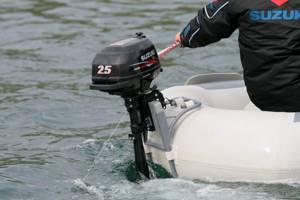
One of the most important parameters is the power of the drive unit
For single seat rubber boat
A single-seat boat can be equipped with a 5-horsepower engine, the distinctive features of which are quietness and efficiency. If the design of the boat allows, you can install a more powerful motor, allowing you to overcome strong winds or waves with one passenger on board and additional equipment.
For double boat PVC
A motor for a two-seater rubber boat, which is 6-7 m long, can have a power of 10-12 horsepower. The additional power reserve will allow you to take on board a container of fuel, the necessary equipment and quickly bring the craft with two passengers into planing mode.
Outboard motor power
There are three selection criteria. These are the recommendations of the boat manufacturer, the purpose of the purchase is leisurely fishing, long passages with access to planing, and the desire to register the motor in the GIMS.
General recommendations:
- Up to 3.5 hp Portable motors for single-seater boats with a mounted transom and a flat bottom, which are optimal for the requirements of “just not rowing” and running in displacement mode.
- From 5 to 15 hp Motors for “selfish kits” and boats up to 330 cm long, designed for 4 people. 5 HP models are capable of planing a boat with one helmsman and allow it to reach speeds of up to 20 km/h.
- From 15 to 30 hp Motors for highly seaworthy boats up to 4.5 m long and high load capacity, fishing in company and with a lot of “shmurdyak”.
- From 40 hp Motors for rigid hull boats, RIBs, speedboats, long voyages and commercial use.
For an approximate calculation and purchase “with a reserve” you need to know that to enter the planing mode you need to have 1 hp. by 30 kg of weight.
Do not exceed the power permitted by the boat manufacturer. The watercraft will not be registered with the GIMS. The weight of the motor increases in proportion to the power, therefore, the load on the boat increases, controllability deteriorates and safety decreases.
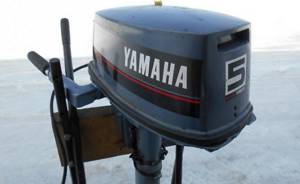
Registration and tax rate
Boats with motors up to 10 hp do not require registration, so PLMs with 9.8-9.9 hp are especially in demand among water-motorists. - Tohatsu, Yamaha, Mercury, Suzuki. Many people choose them for the purpose of further “scenting”, but you need to take into account the cost of the parts and the risk of losing the warranty.
The tax rate depends on the power.
- For boats with engines up to 100 cubic meters - 10 rubles per 1 hp.
- For boats with engines over 100 cubic meters - 20 rubles per 1 hp.
Engine classification
Each type of engine has its own advantages and weaknesses that should be taken into account when choosing. Let's consider the features of motors in accordance with their classification.
Petrol
To operate such a motor, it is necessary to install a fuel tank on the boat and first prepare a mixture of gasoline and oil. The gasoline-type outboard engine can quickly accelerate the boat. The operation of the engine is accompanied by the formation of exhaust gases and is quite noisy. And although such a motor cannot be called environmentally friendly, it is quite popular.
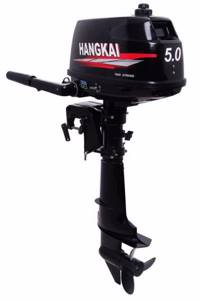
Each type of engine has its own advantages and weaknesses.
Electric
The operation of boat electric motors is carried out from a battery. Such engines do not require oil or gasoline, do not pollute the environment, are lighter than gasoline engines, and are more compact. From an economic point of view, operating an outboard electric motor is much cheaper than a gasoline one.
2-stroke engines
Two-stroke engines have high starting characteristics, reduced weight compared to a four-stroke engine and a more affordable price. The engine can be easily restored to working condition after diving by draining the water from the gasoline pump and carburetor. After this, the two-stroke engine starts easily. The main disadvantages are increased fuel consumption and increased noise.
4-stroke engines
Compared to two-stroke outboard engines, four-stroke engines have an increased service life, reaching more than 5 thousand hours. Four-stroke engines consume less fuel than two-stroke engines and produce less noise. Exhaust gases, thanks to a more advanced fuel supply system, have less toxicity. The disadvantage of four-stroke engines is their high price and increased weight.
Comparative table of product characteristics from the rating
| Name | Outboard motor HDX T 2.6 CBMS | Outboard motor Huter GBM-35 | Boat motor Instar LPM 15052 | Outboard motor HDX T 5 BMS | Outboard motor Mikatsu M3.5FHS | Outboard motor SEA-PRO F 4S |
| Category | The best gasoline engines for boats costing up to 20,000 rubles | The best models of gasoline engines costing up to 60,000 rubles | ||||
| Place | 1 | 2 | 3 | 1 | 2 | 3 |
| Type | petrol | petrol | petrol | petrol | petrol | petrol |
| Power | 2.6 hp, 1900 W | 3.5 hp, 2500 W | 4 HP, 2944 W | 5 HP, 3600 W | 3.6 hp, 2640 W | 4 HP, 2900 W |
| Maximum engine speed | 5500 rpm | 8500 rpm | 7000 rpm | 5500 rpm | 5300 rpm | 5000 rpm |
| Transom | S, 381 mm | 380 mm | S, 381 mm | S, 381 mm | S, 381 mm | S, 381 mm |
| Control | tiller | tiller | tiller | tiller | tiller | tiller |
| Tact | two-stroke | two-stroke | two-stroke | two-stroke | two-stroke | four-stroke |
| Number of cylinders | 1 | 1 | 1 | 1 | 1 | — |
| Working volume | 50 cm³ | 58 cm³ | 102 cm³ | 74.6 cm³ | 112 cm³ | — |
| Cylinder diameter | 42 mm | 55 mm | 47 mm | 59 mm | — | — |
| Piston stroke | 36 mm | 43 mm | 43 mm | 41 mm | — | — |
| Gearbox | 2.08:1 | 2.08:1 | 2.08:1 | 2.08:1 | 2.08:1 | — |
| Launch | manual | manual | manual | manual | manual | — |
| Lubricant type | mixture | mixture | mixture | mixture | — | — |
| Cooling | water | water | water | — | — | — |
| Fuel tank | built-in, 1.2 l | 1.1 l | built-in, 1.2 l | built-in, 1.5 l | built-in, 1.5 l | built-in, 1.1 l |
| Broadcast | forward-neutral | forward-neutral-reverse | forward | forward-neutral-reverse | — | — |
| Electronic ignition system | There is | There is | There is | There is | — | — |
| Moving in shallow water | There is | — | — | — | — | — |
| Number of propeller blades | 3 | 3 | 3 | 3 | 3 | — |
| Engine kill switch | There is | There is | — | — | — | — |
| Weight | 9.8 kg | 9.4 kg | 20 kg | 12 kg | 22 kg | — |
| Additional Information | propeller exhaust system | — | — | — | — | — |
| Guarantee period | 1 year | 3 years | 5 years, subject to maintenance | 3 years | — | — |
| Fuel type | AI92 | AI-92 | AI 92 | — | — | — |
| Raising the motor | manual | manual | manual | manual | manual | — |
| Adjusting the motor angle | There is | There is | There is | — | — | — |
| Screw diameter | 7 « | — | — | — | — | — |
| Equipment | - outboard motor; - screw; - passport (instructions). | — | — | — | — | — |
| Fuel supply system | carburetor | carburetor | carburetor | carburetor | — | — |
| Dimensions (WxHxD) | 264x1035x283 mm | 343x1014x700 mm | 292x968x597 mm | 361x1029x717 mm | — | — |
| Fuel consumption | 2.6 l/h | 1.8 l/h | — | — | — | — |
| Tiller tilt | There is | — | — | — | — | — |
| Life time | 0 years | — | — | — | — | — |
What role does the mass of the motor play?
When planning the purchase of an outboard boat motor, you should take into account its weight, which affects the ease of transportation and speed of installation. In addition, a heavy motor is more difficult to lift and move when making adjustments. The weight of small gasoline engines with power up to 5 horsepower does not exceed 15-20 kg. It is easy to independently cope with loading and unloading the motor from the car and installing it on the transom of the boat. To mount more powerful motors whose weight exceeds 30-40 kg, the services of an assistant will be necessary.
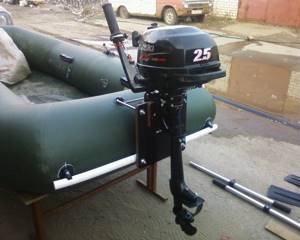
Weight should be taken into account when planning to purchase an outboard motor.
Outboard motors
Twenty hp outboard motors for inflatable boats. and more are used very rarely, since their excessive power and inefficiency do not bring much benefit. Such a motor is capable of driving you with a large load at high speed, and even reach a speed sufficient for water skiing. Outboard motors over 20 hp. usually installed on metal boats.
Inflatable boats with suspended transoms are usually equipped with electric motors or gasoline engines of minimal power.
Advanced fishermen have two engines for one boat. For fast movement across the pond, a powerful motor is installed, and single-cylinder engines with a power of 5 hp are also suitable for trolling.
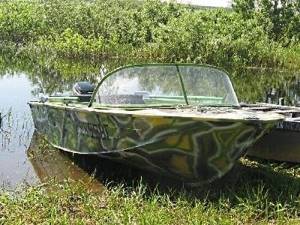
Motor for a rubber boat - the best models and ratings of manufacturers
When thinking about which motor is best to use for rubber boats, you should focus on the rating of PVC boat motors. The leading position among the products of various manufacturers is occupied by Japanese-made motors. They have a fairly high cost. However, this is the price for excellent quality, increased reliability and long service life. Popular brands include Honda products, Tohatsu boat units, as well as Suzuki and Yamaha engines. The American corporation Mercury, which has been producing engines for more than 80 years, is not far behind in quality.
What can a motor for a PVC boat be made from?
To make your own boat engine, you can use various technical devices and tools that have a working motor. With plumbing skills and a little imagination, it’s easy to turn a screwdriver, electric drill, walk-behind tractor, trimmer, gas mower, and even windshield washer motor into a boat engine. Let's look at this in more detail.
Electric motor from a drill
This tool is always available in the arsenal of a home craftsman. It is more convenient to use a cordless tool that has a button for adjusting the speed of the output shaft. It is necessary to consider the issues of sealing the engine, secure all parts of the drive station on a common basis and, using available means, ensure the transmission of torque to the propeller. All that remains is to assemble the device and conduct operational tests.
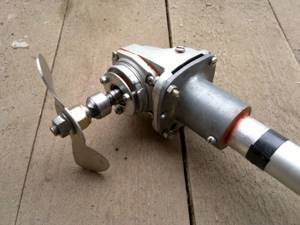
Various technical devices can be used to make your own boat engine
Using the windshield washer motor
Those who like to experiment use various types of electric motors to make boat engines. The windshield washer motor, powered by a twelve-volt battery, is no exception. Of course, a boat with such a motor will not be able to compete with other boats, but it will cope with the task of transferring rotation from the engine shaft to the propeller.
Motor based on a gas mower
The high price of imported outboard motors forces boat owners to engage in interesting experiments in the manufacture of outboard engines. In search of a budget solution, some use a lawn mower engine, the characteristics of which allow it to work for a long time under load. The power of such a motor is enough for a two-seater rubber boat.
Step-by-step technology
To make a homemade motor from a drill, you should first develop a sketch of the device, and then start working, adhering to step-by-step technology.
Required tools and materials
To assemble the outboard motor, you should prepare an electric drill, select a propeller drive gearbox, and also stock up on materials for making clamps for fixing the motor, drive shaft, propeller and other necessary parts. You will also need scissors for cutting metal, electric welding and a grinder.
Lifting mechanism for impeller
A device for lifting the screw can be made by securing the motor with clamps to a rigid base and connecting the drill shaft to the impeller. By rotating the entire structure, you can raise the drive station.
Selection of gearbox and manufacturing of propeller
A gearbox is necessary to transmit torque from the drill shaft to the screw. A gear ratio of 1:5 will ensure normal impeller rotation speed. To make a propeller, make markings on a steel sheet, cut out the blanks and weld them to a pre-prepared propeller base.


